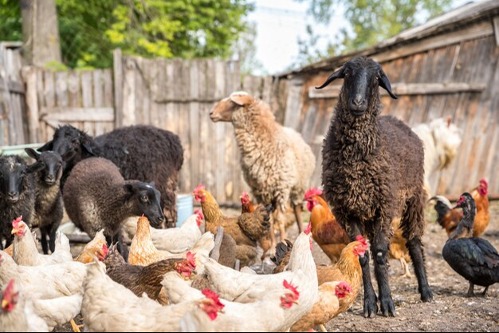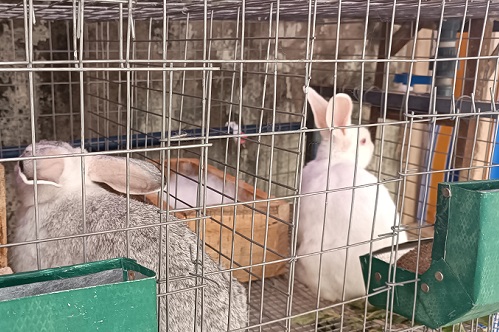Humans started the domestication of animals many years ago. These animals were used for food, power and clothing then and even today. The first domesticated animals were chickens, goats, sheep and pigs. Later, cattle and horses were added to the group of domesticated animals.
First-time farmers, whom I call newbie farmers usually ask: What livestock animals should I raise on my farm for money-making or hobby purposes? This article will discuss common livestock that newbie farmers can raise with ease. These animals include:
1. Poultry
Poultry birds are raised for either egg or meat production. Some farmers keep chickens for both. Chickens are the most common poultry birds raised for eggs or meat. A healthy chicken will lay about 300 eggs in a year. Birds kept for meat include chickens, turkeys, ducks and geese. These birds attain maturity fast and a fast-growing chicken such as a broiler can be produced in 6 to 8 weeks.
2. Goats and Sheep
These two ruminant animals are great for farmers, especially small-scale livestock farmers. Goats and sheep are easy to manage and perform optimally under proper management. The offspring of both goats and sheep grow fast and can attain market weight within 6 months. Due to their small size, goats and sheep are easier to handle and require a few rearing and handling facilities.
3. Pigs (Swine)
These are other domestic animals that new farmers can raise. Pigs grow fast and they are widely available and cheap to buy. You can purchase weaner pigs of about 10 kg in body weight and finish them to about 100 kg. You can achieve this in a few months. While pigs are destructive, they are so adorable and do not require gigantic, sophisticated structures or facilities to keep them.
4. Cattle
People raise cattle for some purposes. They raise them for milk, meat, and as draught animals (beasts of burden). The cattle raised for meat production are called beef cattle, while those raised for milk production are called dairy cattle. Milk production is a specialized industry and is usually not done on small-scale or hobby farms. Beef, nevertheless, adapts well to small or hobby farms.
Cattle do well on free-range and they are not labor intensive. In keeping cattle, it is necessary to put up fences and specialized equipment for easy management and handling. While an adult cow can weigh as high as 700 kg (1500 lb), it takes more than two years to attain this weight, which makes cattle farming more of a long-term investment.
5. Rabbits
These are small monogastric animals that are very cheap to keep. They can either be raised for meat or as pets. Rabbit farming is not labour-intensive and they require adequate attention, especially to their health and welfare. This is because they are highly susceptible to parasites, predators, and diseases. Regardless, they are generally acceptable and pose no serious risk to the environment, time and finance to the farmer.
Livestock farming works well with various farming situations. I have observed that livestock farming also interests children more than vegetable gardens. The above list is limited to popular or common livestock animals. There are others that I couldn’t discuss, such as deer, alpaca and cane rats.




